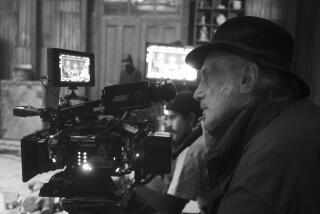A Second Look: Luchino Visconti’s ‘The Leopard’
The great French critic André Bazin said of director Luchino Visconti that he filmed the Sicilian fishermen in “La Terra Trema” as if they were “tragic princes.” In the 1963 epic “The Leopard,” rapturously presented on a new Criterion Blu-ray, Visconti reverses the equation, pulling a family of 19th century aristocrats down to earth. Set in Sicily during the Risorgimento, the period that marked the end of Sicily’s existence as an independent monarchy and the emergence of an Italian state, the movie exults in the last gasps of the nobility’s opulence, even as it acknowledges and — ambivalently — endorses the necessity of its end.
Perhaps the most overtly dialectical of Visconti’s movies, “The Leopard” embodies the contradictions inherent in his identity. As a wealthy aristocrat with Marxist leanings — not to mention a gay man whose sexual partners included Coco Chanel — Visconti was a cauldron of conflicting impulses that make themselves felt in “The Leopard’s” mixture of nostalgia and revolutionary fervor. The movie’s opulent sets and Giuseppe Rotunno’s limpid cinematography transmit a palpable yearning for the gilded palaces and gala balls of a bygone era. But Visconti pines equally for the squandered potential of Garibaldi’s revolution, which in “The Leopard” amounts to nothing more than an exchange of cultured noblemen for a new political class of wealthy boors.
As the prince of Salina, a nobleman who sees the political tides turning but is powerless to divert them, Burt Lancaster is every inch the big cat of the movie’s title. Lancaster’s muscled frame and imposing stature naturally lent itself to action roles, but the same engrossing physicality also informed his less two-fisted parts. In “The Leopard,” his every move resonates with sublimated power. The way he folds a handkerchief or sorts through a freshly dealt hand of cards is a study in elegance and grace. Where so many widescreen epics merely use the image to bludgeon the audience with production value, Visconti maintains a constant dialogue between the grandeur of the prince’s surroundings and the minute gestures that define him in the midst of historical upheaval.
So too with Alain Delon and Claudia Cardinale, more limited actors whom Visconti uses expertly. Delon’s irrepressible cockiness dovetails with the heedless self-advancement of the prince’s nephew, Tancredi, who changes political alliances with such conviction that he scarcely seems to remember he once fought alongside those he now condemns. The prince’s inability, or unwillingness, to shift with the wind makes him both admirable and doomed, a quality he shares with many of Visconti’s heroes.
“The Leopard” caricatures the ascendant ruling class with razor-sharp snobbery, looking down its Roman nose at rural mayor Paolo Stoppa, whose obsequious manner and ill-fitting formal wear mark him as an eager rube. But Visconti is as merciless with the prince’s family. When they arrive at their summer home after a long carriage ride, they emerge caked in dust like relics exhumed from some forgotten attic corner. Able to see his class’ failings as well as its grandeur, the prince looks over the revelers at a high-society ball and wonders if inbreeding hasn’t made them more like monkeys than men.
The ball sequence, which occupies much of the three-hour film’s final third, is a rapturously staged set piece that gradually becomes overtaken by the prince’s burgeoning sense of his own mortality. Dancers wind through the house, giddily celebrating their own achievements, while he looks on with a mixture of sorrow and resignation, not only accepting death but almost craving it. He has no desire to live beyond his time.
Criterion’s Blu-ray, derived from a new restoration sourced from the original negative, renders the nearly 50-year-old film with breathtaking clarity and depth, providing a glimmering window into the world “The Leopard” so vividly reconstructs.
More to Read
Only good movies
Get the Indie Focus newsletter, Mark Olsen's weekly guide to the world of cinema.
You may occasionally receive promotional content from the Los Angeles Times.










